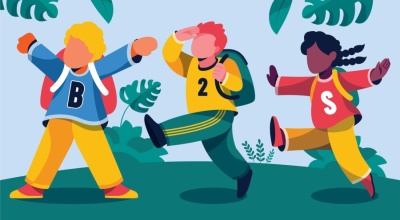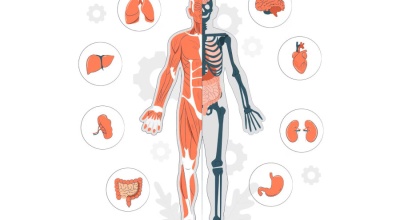Milk and milk products provide a wealth of nutrition benefits. But unpasteurized milk can harbor dangerous microorganisms that can pose serious health risks to you and your family. Pasteurized milk that is correctly handled in the dairy, bottled, sealed, and refrigerated after pasteurization, and that is properly handled by the consumer, is very unlikely to contain illness-causing germs. Considering the large amount of pasteurized milk that people drink, illness from it is very rare.
Many people eat food that has undergone minimal processing, and some people also choose to drink raw milk.
Raw milk and products made from it, however, can pose severe health risks, including death. That is because raw milk has not undergone a process called pasteurization that kills disease-causing germs.
Video: The Dangers of Unpasteurized Milk
 Raw Milk, Know the Raw Facts
Raw Milk, Know the Raw Facts
5 Raw Milk Myths Busted!

- MYTH: Raw milk is healthier and more nutritious than pasteurized milk.
- MYTH: Drinking raw milk may not be safe, but no harm will come from eating products (soft cheese, ice cream, and yogurt) made from raw milk.
- MYTH: Milk is safe if it is labeled “organic.”
- MYTH: Raw milk and products made from it – soft cheese and yogurt – are safe if they come from healthy animals.
- MYTH: If animals are raised in sanitary conditions on humane farms, their milk is safe.

- FACT: Most of the nutritional benefits of drinking raw milk are available from pasteurized milk without the risk of disease that comes with drinking raw milk.
- FACT: Raw milk made into other products, like soft cheese, ice cream, and yogurt, can still cause dangerous infections. When consuming these products, make sure they are made from pasteurized milk.
- FACT: Only organic milk that has been pasteurized is safe to drink.
- FACT: Healthy animals can carry illness-causing germs, such as Brucella, Campylobacter, Cryptosporidium, E. coli, Listeria, and Salmonella, that can contaminate milk.
- FACT: Even dairy farms with very good safety practices can harbor illness-causing germs. And even if tests on a batch of a farm’s raw milk come back negative, it is no guarantee that the next batch of milk will be free of harmful germs.
Milk contamination may occur in these ways:
- Animal feces coming into direct contact with the milk
- Infection of the udder (mastitis)
- Cow diseases (for example, bovine tuberculosis)
- Bacteria that live on the skin of animals
- Environment (for example, feces, dirt, and processing equipment)
- Insects, rodents, and other animal vectors
- Unsanitary conditions in milk processing plant
- Cross-contamination from dairy workers, such as contact with dirty clothing or boots
Pasteurization is the only way to kill many of the bacteria in milk that can make people very sick.
Information and Resources
Comprehensive Information on the Dangers of Raw Milk
Download Food Handling Fact Sheets
Download a quick overview for staying healthy and free from food poisoning when getting takeout, delivery or dining out. A reference guide of invaluable information on meal prep, shopping, and storage lists of DOS and DON’TS food safety from the grocery cart to the refrigerator
 7 Steps Community Meals and Food Safety in the Kitchen
7 Steps Community Meals and Food Safety in the Kitchen
 Advice About Eating Fish and Shellfish Chart Only
Advice About Eating Fish and Shellfish Chart Only
 Advice About Eating Fish and Shellfish Chart Only - Spanish
Advice About Eating Fish and Shellfish Chart Only - Spanish
 Advice About Eating Fish and Shellfish Chart Plus Questions and Answers
Advice About Eating Fish and Shellfish Chart Plus Questions and Answers
 Buy, Store and Serve Safe Food for Buffets or the Holiday Season
Buy, Store and Serve Safe Food for Buffets or the Holiday Season
 Choose Fish and Shellfish Wisely Should I Eat the Fish I Catch
Choose Fish and Shellfish Wisely Should I Eat the Fish I Catch
 Choose Fish and Shellfish Wisely Should I Eat the Fish I Catch - Spanish
Choose Fish and Shellfish Wisely Should I Eat the Fish I Catch - Spanish
 Cooking for Groups and Holiday Food Safety in the Kitchen
Cooking for Groups and Holiday Food Safety in the Kitchen
 Food Safety for Safe Handling When Getting Takeout or Delivery
Food Safety for Safe Handling When Getting Takeout or Delivery
 Grill it Safe Food Safety Card
Grill it Safe Food Safety Card
 Grill it Safe When Cooking Outdoors Food Safety E-Card
Grill it Safe When Cooking Outdoors Food Safety E-Card
 Handling Food Safely While Eating Outdoors
Handling Food Safely While Eating Outdoors
 Handling Food Safely While Eating Outdoors - Spanish
Handling Food Safely While Eating Outdoors - Spanish
 Healthy Guests Happy Holidays Food Safety Flyer
Healthy Guests Happy Holidays Food Safety Flyer
 Holiday Food Safety Brochure
Holiday Food Safety Brochure
 Keeping Bag Lunches Safe From Bacteria That Cause Foodborne Illness
Keeping Bag Lunches Safe From Bacteria That Cause Foodborne Illness
 Keeping Bag Lunches Safe From Bacteria That Cause Foodborne Illness - Spanish
Keeping Bag Lunches Safe From Bacteria That Cause Foodborne Illness - Spanish
 Meal Prep Lists of Dos and Don’ts Food Safety from the Grocery Cart to the Refrigerator
Meal Prep Lists of Dos and Don’ts Food Safety from the Grocery Cart to the Refrigerator
 New and Improved Nutrition Facts Label
New and Improved Nutrition Facts Label
 New and Improved Nutrition Facts Label - Spanish
New and Improved Nutrition Facts Label - Spanish
 Omega-3 Fatty Acids Fact Sheet for Consumers
Omega-3 Fatty Acids Fact Sheet for Consumers
 Refrigerator and Freezer Storage Chart
Refrigerator and Freezer Storage Chart
 Selecting and Serving Fresh and Frozen Seafood Safely
Selecting and Serving Fresh and Frozen Seafood Safely
 Selecting and Serving Produce Safely
Selecting and Serving Produce Safely
 Selecting and Serving Produce Safely- Spanish
Selecting and Serving Produce Safely- Spanish
 Shopping and Storage Lists of Dos and Don’ts Food Safety from the Grocery Cart to the Refrigerator
Shopping and Storage Lists of Dos and Don’ts Food Safety from the Grocery Cart to the Refrigerator
 Tailgating Food Safety Q & A
Tailgating Food Safety Q & A
 Test Your Safety Knowledge About Ready-to-Cook Foods
Test Your Safety Knowledge About Ready-to-Cook Foods
 Thanksgiving Holiday Food Safety Information
Thanksgiving Holiday Food Safety Information
 The Raw Story Frozen Chicken Entrees for Food Safety
The Raw Story Frozen Chicken Entrees for Food Safety
 Turkey Thawing Hints from the National Turkey Federation
Turkey Thawing Hints from the National Turkey Federation
 What is a Serving Size Graphic
What is a Serving Size Graphic
 What You Need to Know About Juice Safety
What You Need to Know About Juice Safety
 What You Need to Know About Juice Safety - Spanish
What You Need to Know About Juice Safety - Spanish
FoodSafety.gov Charts: Food Safety at a Glance
How long can you store leftovers in the refrigerator? How can you tell when chicken breasts are done? How long does it take to cook a turkey? Check out these charts for fast answers.
Storing Food Charts
Storing Food
Whether putting food in the refrigerator, the freezer, or the cupboard, you have plenty of opportunities to prevent foodborne illnesses.
Preparing and Cooking Food Charts
Preparing and Cooking Food
One of the basics of food safety is cooking food to its proper temperature. Foods are properly cooked when they are heated for a long enough time and at a high enough temperature to kill the harmful bacteria that cause foodborne illness.
FoodSafety.gov: FoodKeeper App
The FoodKeeper helps you understand food and beverages storage. It will help you maximize the freshness and quality of items. By doing so you will be able to keep items fresh longer than if they were not stored properly. It is also available as a mobile application for devices, Android and Apple.
Read More
Public Downloads
All items are free to view, share, and download.
Public Downloads - Español (Spanish)
When available, we provide all our content with a Spanish version in our public download section. You can find additional material from sources listed in all our articles.
Download Food Safety Activities, Coloring Sheets, Infographics and Videos
Food Safety Educational Downloads
Download Food Safety Activities
 A Handbook for Kitchen Food Safety
A Handbook for Kitchen Food Safety
 A to Z Food Safety Reference Guide
A to Z Food Safety Reference Guide
 Anyone Can Get Food Poisoning Poster
Anyone Can Get Food Poisoning Poster
 Bad Bug Book Foodborne Pathogenic Microorganisms and Natural Toxins Handbook
Bad Bug Book Foodborne Pathogenic Microorganisms and Natural Toxins Handbook
 Fight BAC Food Safety Poster
Fight BAC Food Safety Poster
 Food Safe Families Activity Book
Food Safe Families Activity Book
 Food Safe Families Activity Book - Spanish
Food Safe Families Activity Book - Spanish
 Food Safety Activity Worksheet
Food Safety Activity Worksheet
 Food Safety at Home or School and When Eating Out Activity Book
Food Safety at Home or School and When Eating Out Activity Book
 Food Safety Keep Hands Clean
Food Safety Keep Hands Clean
 Food Safety Shopping Lists
Food Safety Shopping Lists
 Food Technology Educational Activity Book and Worksheets
Food Technology Educational Activity Book and Worksheets
 Information on Food Safety After School
Information on Food Safety After School
 Information on Food Safety After School - Spanish
Information on Food Safety After School - Spanish
 Learn Food Safety, Hygiene and Preparation for Kids
Learn Food Safety, Hygiene and Preparation for Kids
 Safe Recipe Cooking with Nutritious Ingredients
Safe Recipe Cooking with Nutritious Ingredients
 Safe Recipe Cooking with Nutritious Ingredients - Spanish
Safe Recipe Cooking with Nutritious Ingredients - Spanish
 Safe Recipe Download the Sample Recipe Cards for Food Safety
Safe Recipe Download the Sample Recipe Cards for Food Safety
 Safe Recipe Style Guide
Safe Recipe Style Guide
 Safe Recipe Style Temperature Chart for Food Safety
Safe Recipe Style Temperature Chart for Food Safety
 Safe Recipe Tips for Writing Food Safe Recipes
Safe Recipe Tips for Writing Food Safe Recipes
 Safe Recipe Tips for Writing Food Safe Recipes - Spanish
Safe Recipe Tips for Writing Food Safe Recipes - Spanish
 School Lunch Food Safety Tips Flyer
School Lunch Food Safety Tips Flyer
 Shopper's Guide to Pesticides in Produce Cheat Sheet
Shopper's Guide to Pesticides in Produce Cheat Sheet
 USDA Food Safety Mobile Coloring Book
USDA Food Safety Mobile Coloring Book
Download Food Safety Activity Sheets
 Chill Word Puzzle Food Safety Activity Sheet
Chill Word Puzzle Food Safety Activity Sheet
 Clean Word Puzzle Food Safety Activity Sheet
Clean Word Puzzle Food Safety Activity Sheet
 Food Safety Check Your Steps Children's Color Quiz Activity Worksheet
Food Safety Check Your Steps Children's Color Quiz Activity Worksheet
 Food Safety Core Four Activity Placemat Printable Page 8x14 or 11x17
Food Safety Core Four Activity Placemat Printable Page 8x14 or 11x17
 Food Safety Retailer Story Activity Placemat Printable Page 8x14 or 11x17
Food Safety Retailer Story Activity Placemat Printable Page 8x14 or 11x17
 Food Safety Turkey Story Activity Placemat Printable Page 8x14 or 11x17
Food Safety Turkey Story Activity Placemat Printable Page 8x14 or 11x17
 Food Safety Vegetable Story Activity Placemat Printable Page 8x14 or 11x17
Food Safety Vegetable Story Activity Placemat Printable Page 8x14 or 11x17
 Lunch Choices Food Safety Activity Sheets
Lunch Choices Food Safety Activity Sheets
 Separate, Do not Cross Contaminate Word Search Food Safety Activity Sheet
Separate, Do not Cross Contaminate Word Search Food Safety Activity Sheet
 Solve the Mystery Food Safety Activity Sheets
Solve the Mystery Food Safety Activity Sheets
 Thanksgiving Word Puzzle Food Safety Activity Sheet
Thanksgiving Word Puzzle Food Safety Activity Sheet
 Word Scramble Food Safety Activity Sheets
Word Scramble Food Safety Activity Sheets
 Word Search and Define Food Safety Activity Sheets
Word Search and Define Food Safety Activity Sheets
Download Food Safety Coloring Sheets
 BAC with Cookie Dough Food Safety Coloring Sheet
BAC with Cookie Dough Food Safety Coloring Sheet
 BAC with Turkey Food Safety Coloring Sheet
BAC with Turkey Food Safety Coloring Sheet
 Certificate of Participation Food Safety Coloring Sheet
Certificate of Participation Food Safety Coloring Sheet
 Food Safety Mistakes Coloring Sheet
Food Safety Mistakes Coloring Sheet
 Fruits and Vegetables Food Safety Coloring Sheet
Fruits and Vegetables Food Safety Coloring Sheet
 Handwashing Food Safety Coloring Sheet
Handwashing Food Safety Coloring Sheet
 Hot and Cold Food Safety Coloring Sheet
Hot and Cold Food Safety Coloring Sheet
 Keep Kitchen Clean Food Safety Coloring Sheet
Keep Kitchen Clean Food Safety Coloring Sheet
 No BAC Logo Food Safety Coloring Sheet
No BAC Logo Food Safety Coloring Sheet
 Perishables Food Safety Coloring Sheet
Perishables Food Safety Coloring Sheet
 Picnics Food Safety Coloring Sheet
Picnics Food Safety Coloring Sheet
 Recipes Food Safety Coloring Sheet
Recipes Food Safety Coloring Sheet
 Refrigerator Food Safety Coloring Sheet
Refrigerator Food Safety Coloring Sheet
 Safe Handling Label Food Safety Coloring Sheet
Safe Handling Label Food Safety Coloring Sheet
 Thermy Coloring Sheet
Thermy Coloring Sheet
 Wash and Dry Food Safety Coloring Sheet
Wash and Dry Food Safety Coloring Sheet
Download Food Safety Videos
 7 Tips for Cleaning Fruits and Vegetables Video
7 Tips for Cleaning Fruits and Vegetables Video
 Barbecue Basics Tips to Prevent Foodborne Illness
Barbecue Basics Tips to Prevent Foodborne Illness
 Food Safety during Power Outages Video
Food Safety during Power Outages Video
 Food Safety Video - Cooking to a Safe Internal Temperature and How to Use a Food Thermometer
Food Safety Video - Cooking to a Safe Internal Temperature and How to Use a Food Thermometer
 Food Safety Video - Cross Contamination
Food Safety Video - Cross Contamination
 Food Safety Video - Gear Up for Food Safety
Food Safety Video - Gear Up for Food Safety
 Food Safety Video - How to Thaw Foods Properly
Food Safety Video - How to Thaw Foods Properly
 Food Safety Video - How to Use a Food Thermometer
Food Safety Video - How to Use a Food Thermometer
 Food Safety Video - Smart Kids Fight BAC
Food Safety Video - Smart Kids Fight BAC
 Food Safety Video - Super Bowl Cooking with Martie Duncan
Food Safety Video - Super Bowl Cooking with Martie Duncan
 Food Safety Video - The Importance of Cleaning and Washing During Food Preparation
Food Safety Video - The Importance of Cleaning and Washing During Food Preparation
 Fresh and Frozen Seafood Selecting and Serving it Safely
Fresh and Frozen Seafood Selecting and Serving it Safely
 Prevent Food Poisoning Video - Bake Safely
Prevent Food Poisoning Video - Bake Safely
 Prevent Food Poisoning Video - Bake Safely - Spanish
Prevent Food Poisoning Video - Bake Safely - Spanish
 Prevent Food Poisoning Video - Keep Foods Separate
Prevent Food Poisoning Video - Keep Foods Separate
 Prevent Food Poisoning Video - Keep Foods Separate - Spanish
Prevent Food Poisoning Video - Keep Foods Separate - Spanish
 Prevent Food Poisoning Video - People at Higher Risk for Food Poisoning
Prevent Food Poisoning Video - People at Higher Risk for Food Poisoning
 Prevent Food Poisoning Video - Safety Tips for Handling and Preparing Common Food
Prevent Food Poisoning Video - Safety Tips for Handling and Preparing Common Food
 Prevent Food Poisoning Video - Symptoms of Severe Food Poisoning
Prevent Food Poisoning Video - Symptoms of Severe Food Poisoning
 Safe Handling of Raw Produce and Fresh-Squeezed Fruit and Vegetable Juices
Safe Handling of Raw Produce and Fresh-Squeezed Fruit and Vegetable Juices
 The Dangers of Unpasteurized Milk
The Dangers of Unpasteurized Milk
 The Food Label and Your Party Food Gametime Play By Play
The Food Label and Your Party Food Gametime Play By Play
 What You Should Know The Latest on Hand Sanitizers
What You Should Know The Latest on Hand Sanitizers
 What You Should Know The Latest on Hand Sanitizers - Spanish
What You Should Know The Latest on Hand Sanitizers - Spanish
Download Food Safety Educational Infographics
 5 Steps to Clean Your Refrigerator
5 Steps to Clean Your Refrigerator
 About Cooking for Groups Food Safety Infographic
About Cooking for Groups Food Safety Infographic
 Be a Germ Stopper Cover Your Cough Flyer
Be a Germ Stopper Cover Your Cough Flyer
 Be a Germ Stopper Cover Your Cough Flyer - Spanish
Be a Germ Stopper Cover Your Cough Flyer - Spanish
 Check the Cheese, Avoid Listeria Infographic
Check the Cheese, Avoid Listeria Infographic
 Check the Cheese, Avoid Listeria Infographic - Spanish
Check the Cheese, Avoid Listeria Infographic - Spanish
 Food Safety in the Kitchen Infographic
Food Safety in the Kitchen Infographic
 Fruit and Vegetable Safety Infographic
Fruit and Vegetable Safety Infographic
 Fruit and Vegetable Safety Infographic - Spanish
Fruit and Vegetable Safety Infographic - Spanish
 Get Ready to Grill Safely Infographic
Get Ready to Grill Safely Infographic
 Get Ready to Grill Safely Infographic - Spanish
Get Ready to Grill Safely Infographic - Spanish
 Graphics About Food Safety
Graphics About Food Safety
 Graphics About Food Safety - Spanish
Graphics About Food Safety - Spanish
 In an Emergency Food Safety in the Kitchen Infographic
In an Emergency Food Safety in the Kitchen Infographic
 Keeping Food Safe A Global Responsibility Infographic
Keeping Food Safe A Global Responsibility Infographic
 Raw Milk, Know the Raw Facts
Raw Milk, Know the Raw Facts
 Rules of the Game for Food Safety Infographic
Rules of the Game for Food Safety Infographic
 Rules of the Game for Food Safety Infographic - Spanish
Rules of the Game for Food Safety Infographic - Spanish
 Safety Tips for Handling and Preparing Common Foods Infographic
Safety Tips for Handling and Preparing Common Foods Infographic
 The Food Production Chain Safety Infographic
The Food Production Chain Safety Infographic
 The Raw Story – Frozen Chicken Entrees
The Raw Story – Frozen Chicken Entrees
Download Handwashing Activities, Worksheets, Posters and Videos
Handwashing Educational Downloads
Download Handwashing Activities
 About Global Handwashing Day
About Global Handwashing Day
 About Global Handwashing Day Advocacy Toolkit
About Global Handwashing Day Advocacy Toolkit
 About Global Handwashing Day Hand Hygiene Why How and When Brochure
About Global Handwashing Day Hand Hygiene Why How and When Brochure
 Food Safety Handwashing Story Activity Placemat Printable Page 8x14 or 11x17
Food Safety Handwashing Story Activity Placemat Printable Page 8x14 or 11x17
 Handwashing Activity Worksheets
Handwashing Activity Worksheets
 Handwashing Chart
Handwashing Chart
 Handwashing Fight Germs Wash Your Hands Video
Handwashing Fight Germs Wash Your Hands Video
 Teaching Young Children Handwashing Family Guide
Teaching Young Children Handwashing Family Guide
 Wash Hands Video - Spanish
Wash Hands Video - Spanish
 Washing Hands Safety Fact Sheet
Washing Hands Safety Fact Sheet
 Washing Hands Safety Fact Sheet - Spanish
Washing Hands Safety Fact Sheet - Spanish
 What You Should Know The Latest on Hand Sanitizers Video
What You Should Know The Latest on Hand Sanitizers Video
 What You Should Know The Latest on Hand Sanitizers Video - Spanish
What You Should Know The Latest on Hand Sanitizers Video - Spanish
Download Scrub Club Activity Worksheets
 Scrub Club 6 Steps Hand Washing Bathroom Poster
Scrub Club 6 Steps Hand Washing Bathroom Poster
 Scrub Club Cast of Characters
Scrub Club Cast of Characters
 Scrub Club Cast of Characters - Spanish
Scrub Club Cast of Characters - Spanish
 Scrub Club Gel-Mo on the Go Hand Washing Storybook
Scrub Club Gel-Mo on the Go Hand Washing Storybook
 Scrub Club Hand Washing Coloring Pages
Scrub Club Hand Washing Coloring Pages
 Scrub Club Hand Washing Coloring Pages - Spanish
Scrub Club Hand Washing Coloring Pages - Spanish
 Scrub Club Handango Clean Hands Activity Worksheet - Spanish
Scrub Club Handango Clean Hands Activity Worksheet - Spanish
 Scrub Club Handango Clean Hands Activity Worksheets
Scrub Club Handango Clean Hands Activity Worksheets
 Scrub Club Handwashing Activity Worksheets
Scrub Club Handwashing Activity Worksheets
 Scrub Club Influenza Enzo Wanted Poster
Scrub Club Influenza Enzo Wanted Poster
 Scrub Club Influenza Enzo Wanted Poster - Spanish
Scrub Club Influenza Enzo Wanted Poster - Spanish
 Scrub Club Villains Poster
Scrub Club Villains Poster
 Scrub Club Villains Poster - Spanish
Scrub Club Villains Poster - Spanish
 Scrub Club Wallpaper 1024x768
Scrub Club Wallpaper 1024x768
 Scrub Club Wallpaper 800x600
Scrub Club Wallpaper 800x600
Download Handwashing Educational Posters
 Be a Germ Stopper at School and Home Poster for Boys
Be a Germ Stopper at School and Home Poster for Boys
 Be a Germ Stopper at School and Home Poster for Girls
Be a Germ Stopper at School and Home Poster for Girls
 Do Not Forget How-to Handwashing Safety Information Poster 1
Do Not Forget How-to Handwashing Safety Information Poster 1
 Do Not Forget How-to Handwashing Safety Information Poster 2
Do Not Forget How-to Handwashing Safety Information Poster 2
 Do Not Touch the TZONE with Your Hands Safety Information Poster
Do Not Touch the TZONE with Your Hands Safety Information Poster
 Hand Awareness Safety Information Poster
Hand Awareness Safety Information Poster
 Handwashing Poster 1
Handwashing Poster 1
 Handwashing Poster 2
Handwashing Poster 2
 Handwashing Poster 3
Handwashing Poster 3
 Temperature Affect Germs Safety Information Poster
Temperature Affect Germs Safety Information Poster
 What Germs Could Do To Your Hands Safety Information Poster
What Germs Could Do To Your Hands Safety Information Poster
Video Playlist: Food Safety and Nutrition
Fresh and Frozen Seafood: Selecting and Serving it Safely
Fish and shellfish are an important part of a healthful diet. They...
Fish and shellfish are an important part of a healthful diet. They contain high quality protein and other essential nutrients. A well-balanced diet that includes a variety of fish and ...shellfish can contribute to heart health and aid in children's proper growth and development. As you enjoy fresh and frozen seafood, it is important to handle these products safely in order to reduce the risks of foodborne illness. [vpfood]
Safe Handling of Raw Produce and Fresh-Squeezed Fruit and Vegetable Juices
Fruits and vegetables are an important part of a healthy diet. Your...
Fruits and vegetables are an important part of a healthy diet. Your local markets carry an amazing variety of fresh fruits and vegetables that are both nutritious and delicious. As ...you enjoy fresh produce and fresh-squeezed fruit and vegetable juices, it is important to handle these products safely in order to reduce the risks of foodborne illness. [vpfood]
The Food Label and You (Historical PSA)
Are you smarter than a food label? Find out on our quiz show spoof...
Are you smarter than a food label? Find out on our quiz show spoof with host, "Labelman". Plus-CSI ("Calorie Scene Investigator"), a play-by-play sports show battle between two ...dinner parties, nutrition at the drive-through and more. Produced by FDA's Division of Communication Media for CFSAN. [vpfood]
NOTE: FDA has issued final changes to update the Nutrition Facts label for packaged foods. For more information, read the Changes to the Nutrition Facts Label webpage: https://www.fda.gov/food/food-labeling-nutrition/changes-nutrition-facts-label
The Food Label and You: The 5-20 Rule Part 1 (Historical PSA)
Our "Reporter on the Street" asks everyday people, "What's the 5-20...
Our "Reporter on the Street" asks everyday people, "What's the 5-20 Rule?". Our studio host explains. Produced by CDRH-TV for CFSAN [vpfood]
NOTE: FDA has issued final changes to ...update the Nutrition Facts label for packaged foods. For more information, read the Changes to the Nutrition Facts Label webpage: https://www.fda.gov/food/food-labeling-nutrition/changes-nutrition-facts-label
The Food Label and You: Game Show Review (Are You Smarter Than A Food Label?) (Historical PSA)
Spoof of the popular game show, this segment pits FDA's "Labelman"...
Spoof of the popular game show, this segment pits FDA's "Labelman" against a contestant in food label knowledge. Questions cover topics such as Calories, Serving Size, Servings per Container, ...The 5-20 Rule and more. Produced by CDRH-TV for CFSAN [vpfood]
NOTE: FDA has issued final changes to update the Nutrition Facts label for packaged foods. For more information, read the Changes to the Nutrition Facts Label webpage: https://www.fda.gov/food/food-labeling-nutrition/changes-nutrition-facts-label
The Food Label and You: Road Food (Finding Nutrition Information on the Road) (Historical PSA)
Our host talks to a fast-food drive-through diner to demonstrate how to...
Our host talks to a fast-food drive-through diner to demonstrate how to find nutritional information when you are eating out. Produced by CDRH-TV for CFSAN. [vpfood]
NOTE: FDA has issued ...final changes to update the Nutrition Facts label for packaged foods. For more information, read the Changes to the Nutrition Facts Label webpage: https://www.fda.gov/food/food-labeling-nutrition/changes-nutrition-facts-label
The Food Label and You: Party Food (Gametime/Play By Play) (Historical PSA)
Spoof of a Sunday Afternoon Sports show highlighting the importance of...
Spoof of a Sunday Afternoon Sports show highlighting the importance of using the nutrition facts label to control portions, fat, calories and percent daily value. Two studio "sports announcers" ... describe the "game day" food action of two parties: the first, a TV football game gathering and the second, a traditional sit-down dinner. Using the Nutrition Facts Label as their scorecard and the 5-20 Rule as their guide, the two announcers bounce back and forth between the action at the two sites, comparing serving sizes, ingredients and overall food choices in this "Battle of the Dueling Dinner Parties". Produced by CDRH-TV for CFSAN [vpfood]
NOTE: FDA has issued final changes to update the Nutrition Facts label for packaged foods. For more information, read the Changes to the Nutrition Facts Label webpage: https://www.fda.gov/food/food-labeling-nutrition/changes-nutrition-facts-label
The Food Label and You: The 5-20 Rule Part 2 (Historical PSA)
In this take off from the 1950's, our mom explains nutrition facts to...
In this take off from the 1950's, our mom explains nutrition facts to her son using the Nutrition Facts Label and the 5-20 Rule. Grandpa makes an appearance to ...let us know his nutritional needs are different from his grandson's and how to take this into account. Produced by CDRH-TV for CFSAN [vpfood]
NOTE: FDA has issued final changes to update the Nutrition Facts label for packaged foods. For more information, read the Changes to the Nutrition Facts Label webpage: https://www.fda.gov/food/food-labeling-nutrition/changes-nutrition-facts-label
Food Label and You: CSI (Calorie Scene Investigators) (Historical PSA)
A spoof on the popular CSI Series. This double-segment features CSI...
A spoof on the popular CSI Series. This double-segment features CSI actors "investigating" calories, serving size and servings per container--and how to tell how many calories are in a ...serving of a particular food. Produced by CDRH-TV for CFSAN [vpfood]
NOTE: FDA has issued final changes to update the Nutrition Facts label for packaged foods. For more information, read the Changes to the Nutrition Facts Label webpage: https://www.fda.gov/food/food-labeling-nutrition/changes-nutrition-facts-label
The Food Label and You: Servings (Historical PSA)
Gia Mora hosts an exploration of "serving sizes" and servings per...
Gia Mora hosts an exploration of "serving sizes" and servings per container". Street interviewer Margo Seibert asks ordinary people on the street what a proper serving size is. ...Produced by CDRH-TV for CFSAN. [vpfood]
NOTE: FDA has issued final changes to update the Nutrition Facts label for packaged foods. For more information, read the Changes to the Nutrition Facts Label webpage: https://www.fda.gov/food/food-labeling-nutrition/changes-nutrition-facts-label
Food Label & You Show Open (Historical PSA)
Spoof of a 1950's-era scientist giving a classroom presentation...
Spoof of a 1950's-era scientist giving a classroom presentation [vpfood]
NOTE: FDA has issued final changes to update the Nutrition Facts label for packaged foods. For more information, read the Changes ...to the Nutrition Facts Label webpage: https://www.fda.gov/food/food-labeling-nutrition/changes-nutrition-facts-label
Food Safety Modernization Act: Preventive Controls
Description of key preventive control provisions [vpfood]
Description of key preventive control provisions [vpfood]
Fresh and Frozen Seafood: Selecting and Serving it Safely
Fish and shellfish are an important part of a healthful diet. They contain high quality protein and other essential nutrients. A well-balanced diet that includes a variety of fish and ...shellfish can contribute to heart health and aid in children's proper growth and development. As you enjoy fresh and frozen seafood, it is important to handle these products safely in order to reduce the risks of foodborne illness. [vpfood]




























